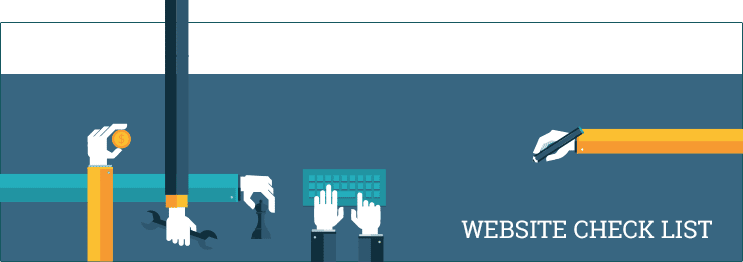Checklist Before Putting Your Website Live!
It’s the little things…
Your website is going live! Well, hold on there for just a minute. Before you launch, I’d like to go over some things with you. You see, there’s nothing worse than a bad launch. Which is why I urge everybody to double check everything about their site.
I’ve written the following article with the intention of making your launch as seamless as possible.
Read on!
Favicon
This is an icon that stands next to your web address in the browser. When users bookmark your site, it will let them easily identify the pages from your website. It’s tiny details like this that can set you apart fro other sites
Titles
Each page should have its own title. It lets the users know what the content of that page is. Be sure to have a unique title for each page on your website.
Metadata
When your website pops up in a browser, the description can determine whether or not someone clicks through to your website. Just like the titles, each page on your website needs a unique description.
Browser Compatibility
People use more than just one type of browser. So make sure that your website works on every one. That includes mobile browsers as well.
Proofread
Go through your web content carefully. Assume that something is wrong and you will find that misspelled word or sentence that just doesn’t work. Make sure to break up large blocks of texts and use check lists when possible to allow users to scan through your content.
Stress Test
Before you go live, check everything exhaustively. Have others peruse your website while you observe. Make note of how they use it and if everything works as you intended.
Check Your Links
Never assume that your links will work. Make sure to check them all. Also, don’t forget to link your logo to your homepage. Remember to put yourself in the place of your user. Do the links look like links? Make sure that they stand out from the rest of your web content.
Validate
Your website should be 100% valid. However, don’t fret too much if it’s not. Make sure to note the reasons so they can be fixed promptly. Common errors include a lack of closing tags, using & instead of & for ampersands and forgoing alt tags.
RSS
If you run a blog or even a newsreel, the RSS feed should be easy to find. You can add an RSS icon in the browser’s address bar.
Analytics
You need to install an analytics tool on your website. By tracking the unique hits you receive daily, browser statistics and even the monthly page views you can view how well your website is performing and the efficacy of your conversion rates.
Sitemap
Install a sitemap.xml file in your root directory. This will allow search engines to crawl through your site and index it. This file will direct the crawlers to every single page throughout your site.
404 Page
When a user looks for a web page that doesn’t exist, a 404 page will be displayed instead. By providing a link to your homepage you can help get your visitors back on the right track.
Back Up
There are two types of people: those that back up their data and those that regret not having backed up their data. Don’t fall into the latter category.
Contact Email
This is my pet peeve. The number one annoying oversight on websites is forgetting to include an easy-to-find contact email.



